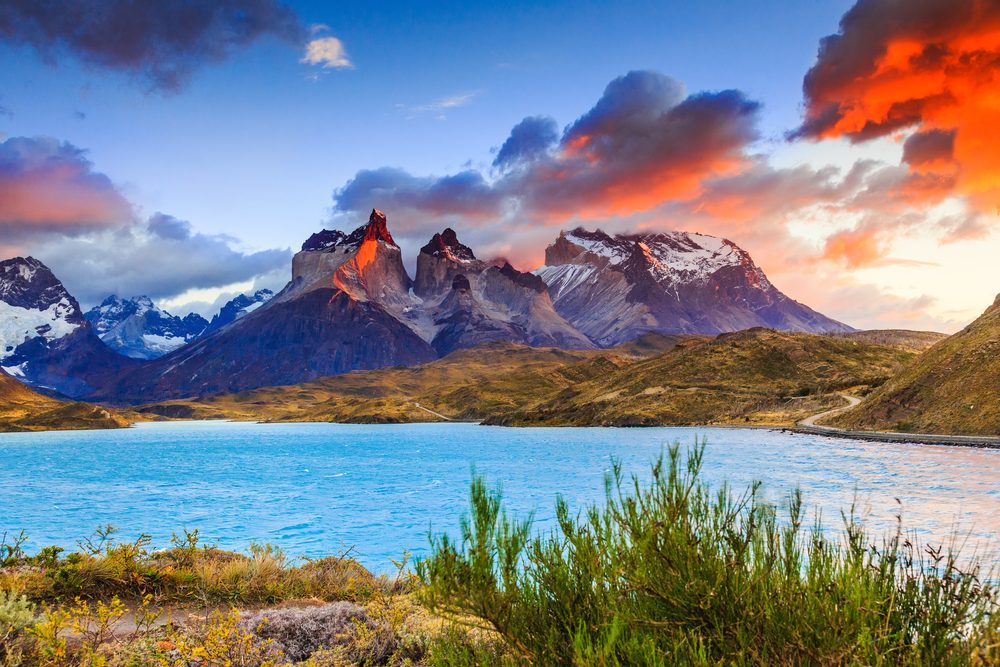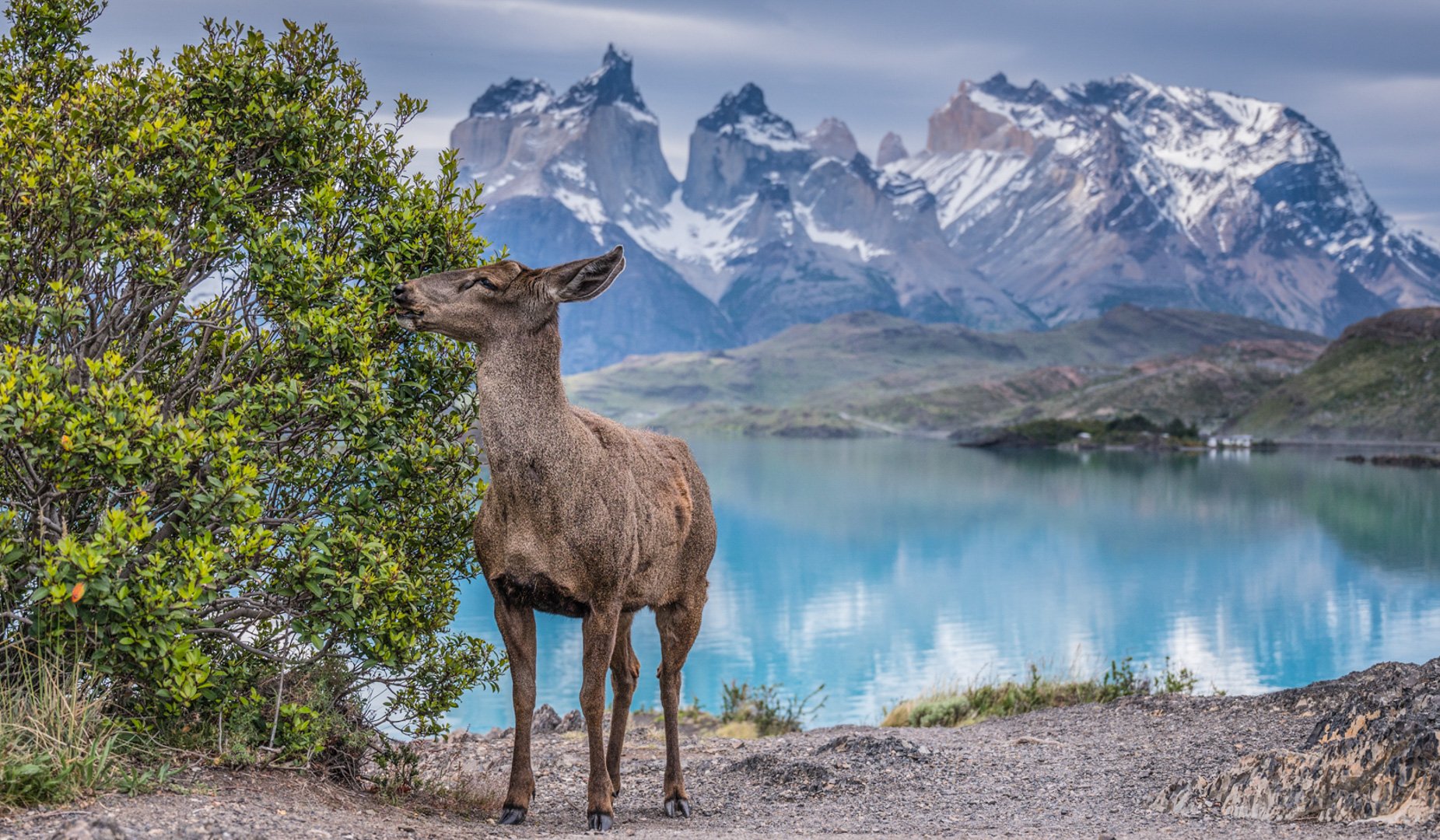Torres del Paine National Park is located in Chile’s southernmost section and is one of 11 places that safeguard the Patagonia region, Magallanes, and the Chilean portion of Antarctica. Four of the protected sites are national parks, with Torres del Paine alone covering 700.43 square miles (1,814.1 square kilometers).

Bernardo O’Higgins National Park is located to the north, and the Argentine Los Glaciares National Park is located to the south. The national park has breathtaking landscape, including glaciers, lakes, mountains, and rivers.
The Paine mountain range is the park’s center, with three stunning granite summits standing up in a row to form the picturesque Torres del Paine. The three summits, Torres d’Agostini, Torres Central, and Torres Monzino, reach heights of over 8,200 feet (2,500 m).

Lakes and glaciers accentuate the adjacent valley environment. The most notable lakes are Grey, Pehoe, Nordenskiold, and Sarmiento, with Grey, Pingo, and Tyndall serving as the most significant glaciers. The Paine River is the main river that runs through the park.
French Valley (Valle del Frances), Bader Valley (Valle Bader), Ascension Valley (Valle Ascencio), and Valley of Silence (Valle del Silencio) are the four valleys.

Cerro Catedral is a cathedral-like rock that rises 6,562 feet (2,000 m) as the center point of French Valley. Cerro Cota, which is nearby, rises to similar heights and adds to the breathtaking scenery.
Cerro Fortaleza and Cerro Escudo are enormous granite walls that look over the Valley of Silence at each other. From within the valley, the western sides of Torres del Paine can also be viewed.

The normal route to see the lookout for the Torres del Paine summits, which are the park’s renowned peaks, is through Ascension Valley. Although it is not one of the three peaks, Paine Grande is the highest mountain at 9,462 feet (2,884 m).
Torres del Paine is divided into four natural zones: the Andean Desert, Magellanic subpolar woodland, Pre-Andean shrubland, and Patagonian steppe. Cougars, foxes, guanacos, and Chilean Huemul live in the area.

The national park is also a birder’s delight, with 15 distinct species of birds of prey. The Andean condor is the most well-known species. Other popular bird species include the Chilean flamingo, Magellanic woodpecker, coscoroba swan, and Magellan goose.